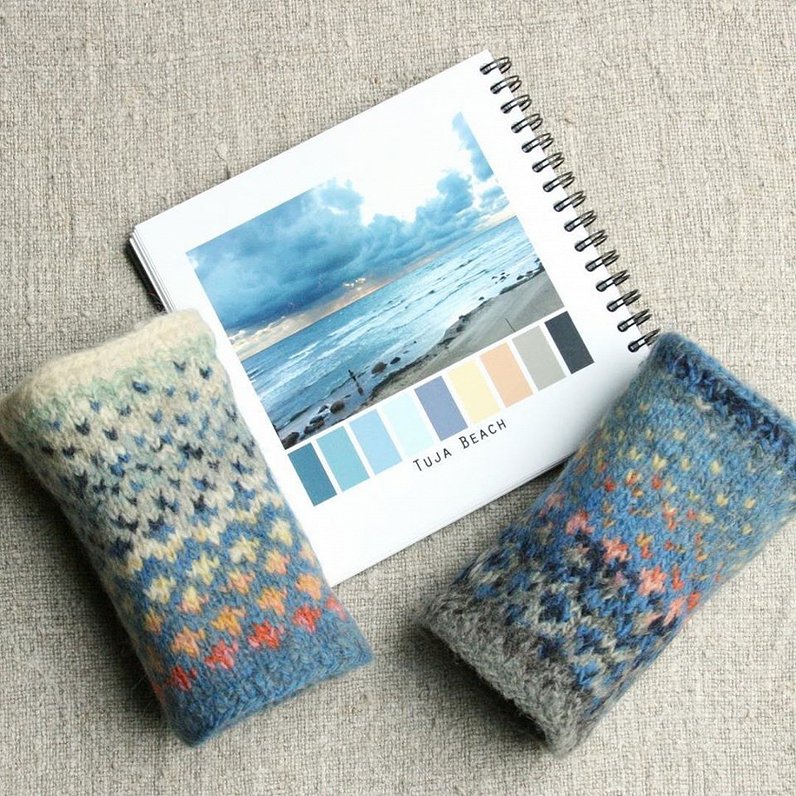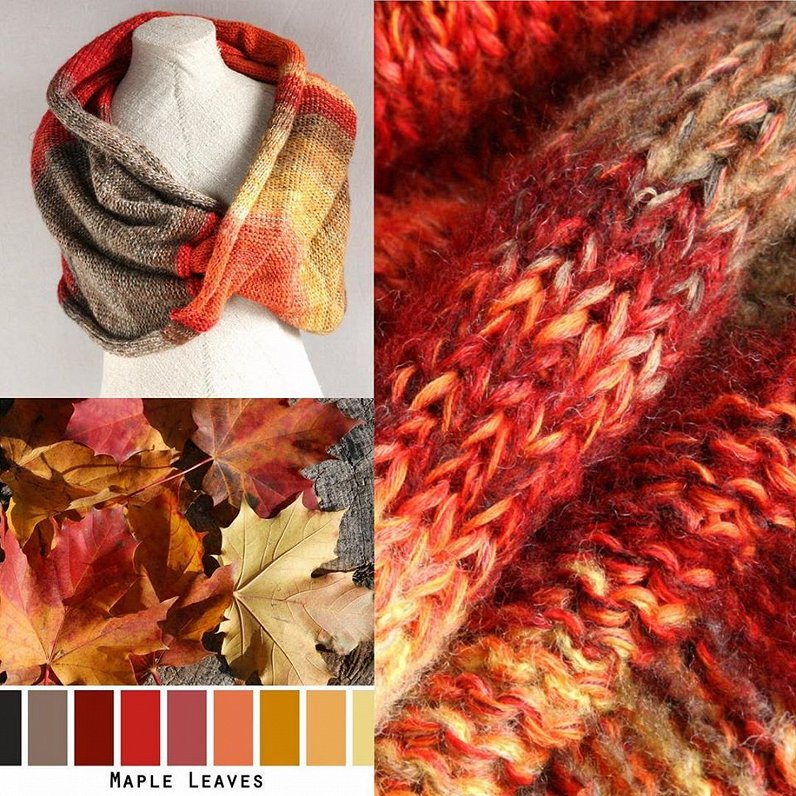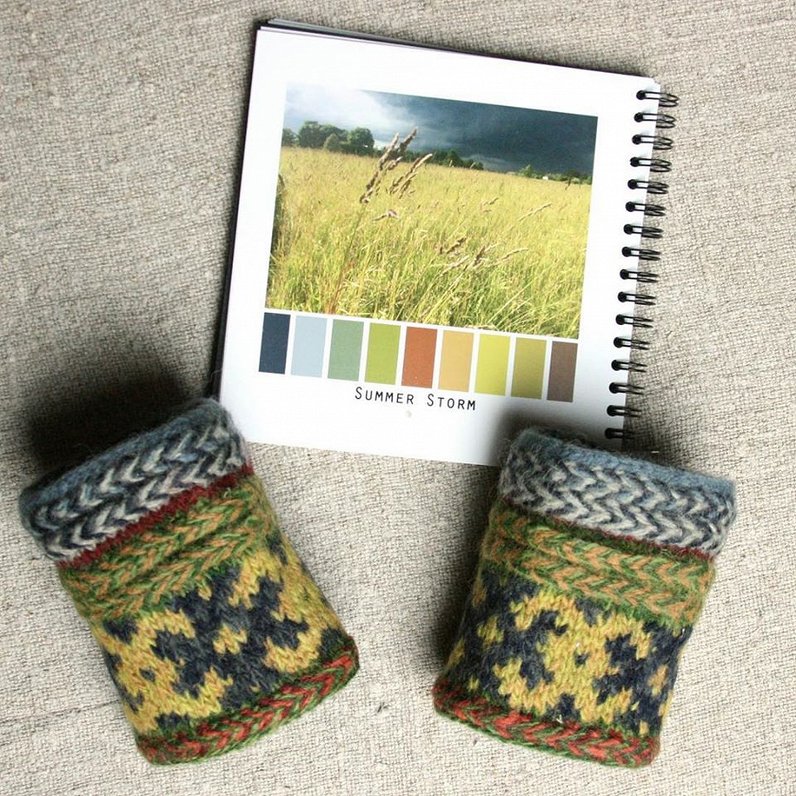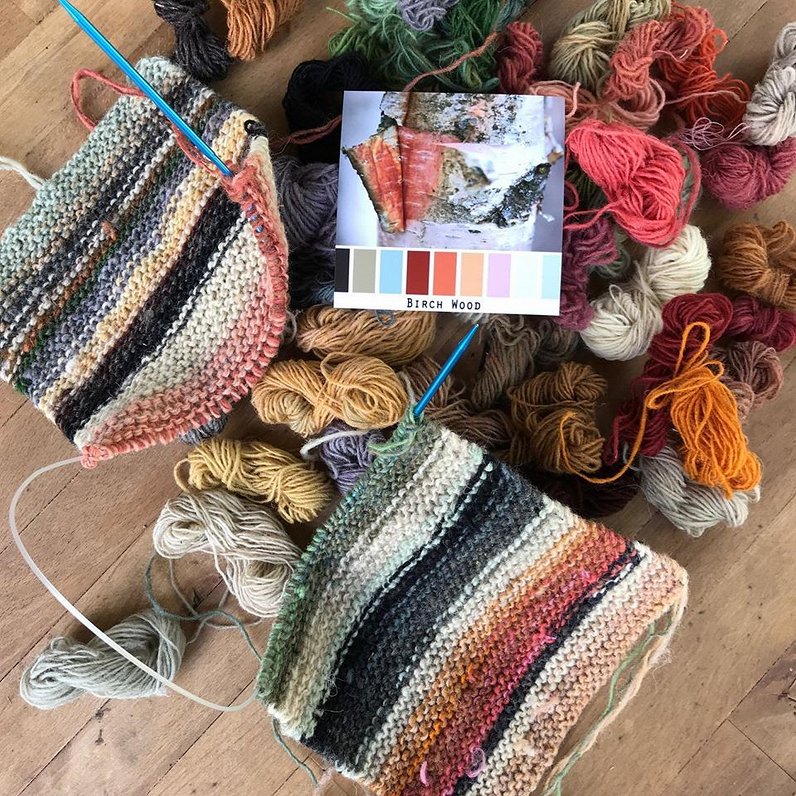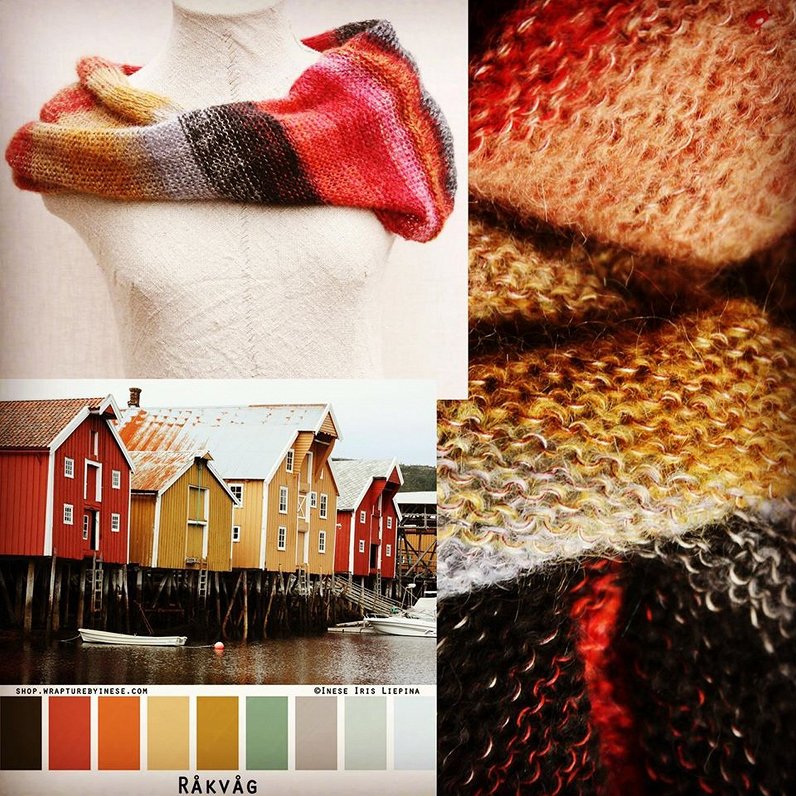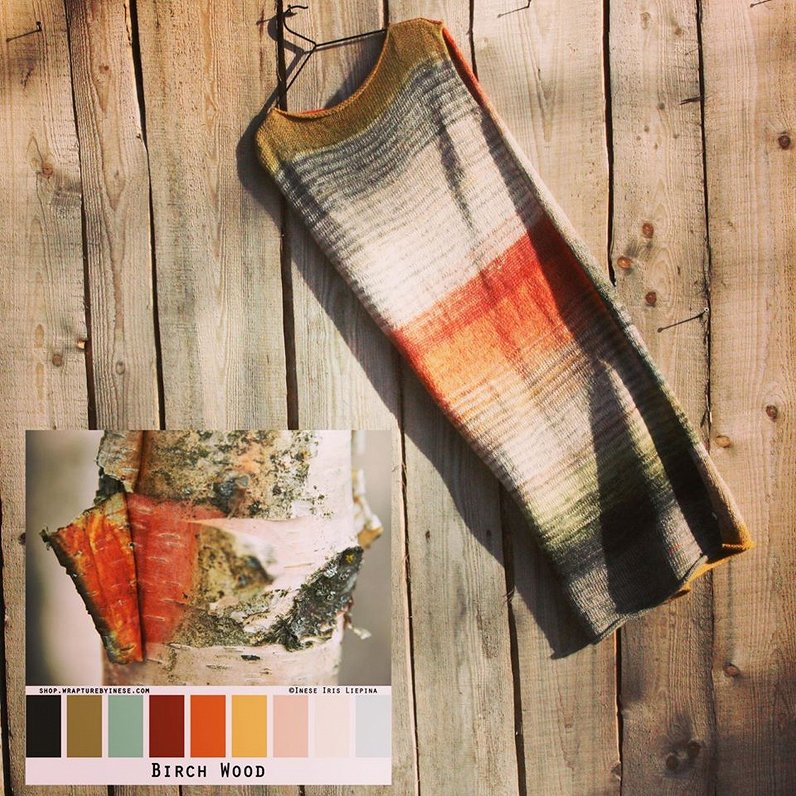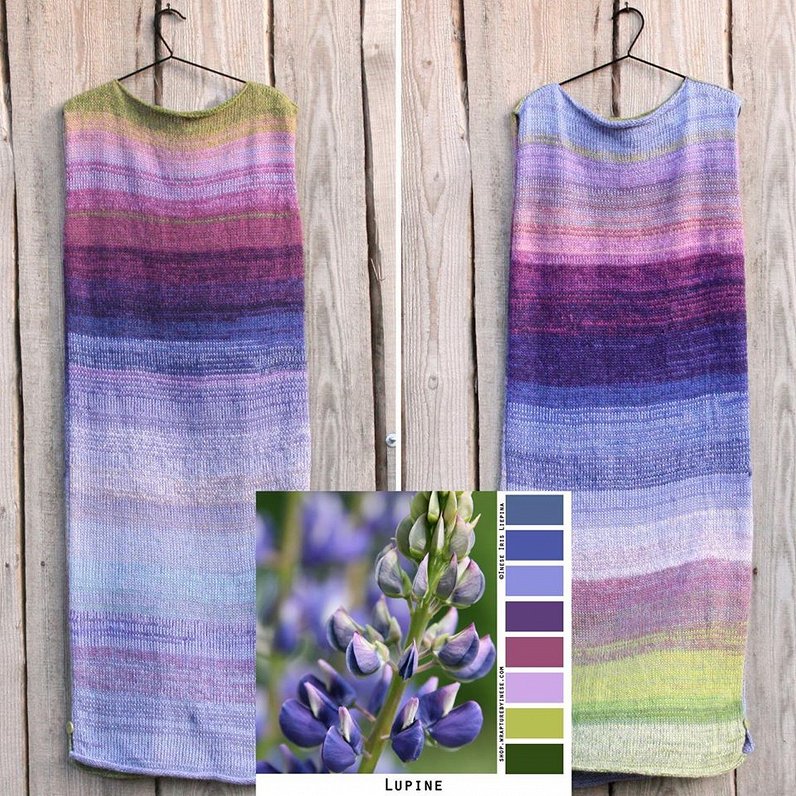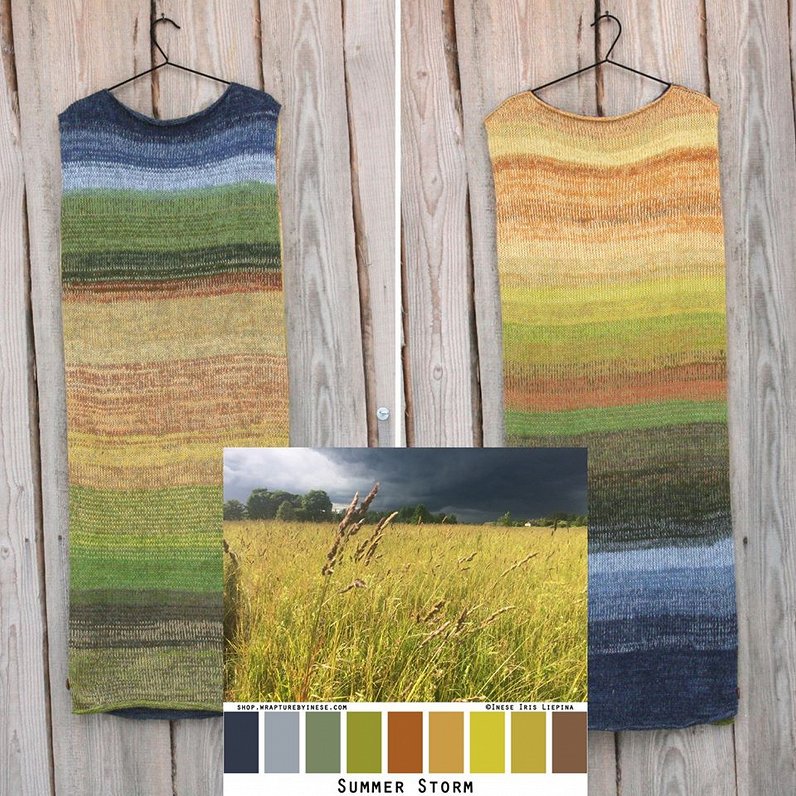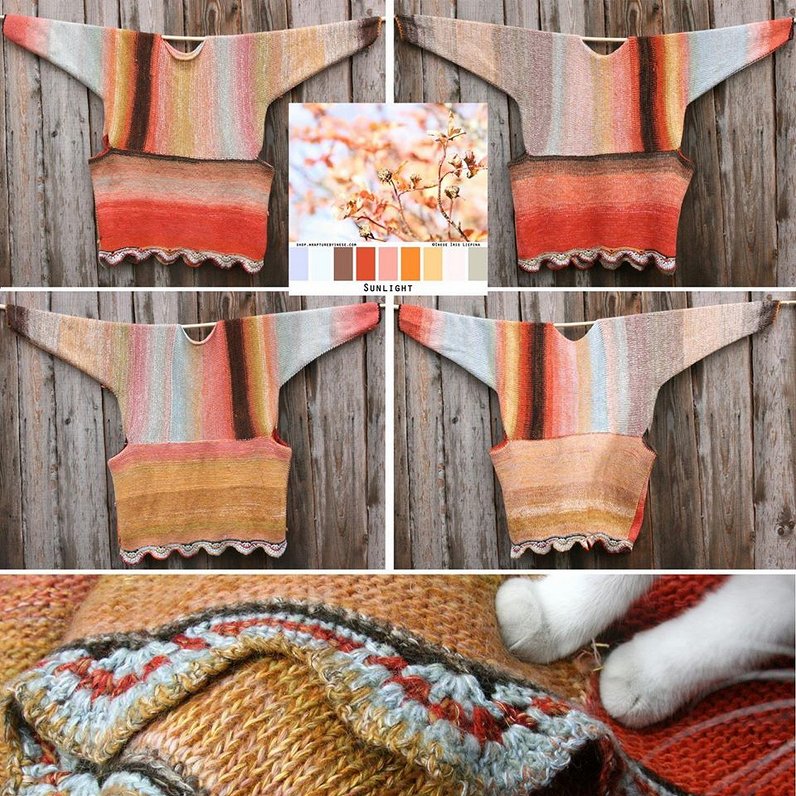Inese Īris Liepiņa grew up in Chicago. Her grandfather is from Piebalga, where the artist now resides. Inese studied art at The School of the Art Institute of Chicago; later worked as a fashion designer and fabric designer in San Francisco. She moved to Latvia in 2005.
Inese began knitting in the 80s. Now, knitters from near and far come to Piebalga to learn how to recreate nature's colors in knitwork. Inese can be contacted via Facebook.
Latvians have plenty of folk songs mentioning color and dyeing of yarns. Scientists have tried to reconstruct the tendencies in traditional gown colors throughout centuries. As early as the 8th-12th century, the most popular color in clothing was dark blue. Brown, red, and yellow have also been observed.
Later, grey and white would come into the picture, whereas in the 18th and 19th century, colorful patterns, stripes, panes emerged.
Spotting colors in nature
- Begin with taking a hike. There surely are colors in the city as well, but the compositions are man-made and not always aesthetically pleasing.
- Choose a segment. Be it scenery, a flower, sunset or sunrise, tree bark - no matter the season, colors always prevail.
- Take photos.
- At home, select the best images and use a color-picker tool - those are widely available on the Internet.
- Create a new image: place the photo and selected colors side-by-side.
- Take the image to your yarn collection on a crafts store and find matching yarn.
- Now, it is time to let your imagination run wild - incorporate the colors in a knitwork or other technique in combinations and patterns you desire.
- If your computer skills are not as advanced, it is possible to select the colors without creating an image. If the colors have been seen on a small object - a leaf, a petal - take it home with you. Punch a small hole in a white piece of paper and cover the object: the hole will reveal a clear separate color.
- Color-observation skills improve over time and can become very enticing.
- The approach can be used in interior design, fashion or other activities involving color matching.

